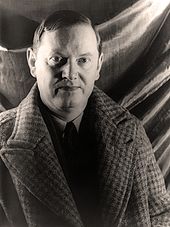
The Temple at Thatch was an unpublished novel by the British author Evelyn Waugh, his first adult attempt at full-length fiction. He began writing it in 1924 at the end of his final year as an undergraduate at Hertford College, Oxford, and continued to work on it intermittently in the following 12 months. After his friend Harold Acton commented unfavourably on the draft in June 1925, Waugh burned the manuscript. In a fit of despondency from this and other personal disappointments he began a suicide attempt before experiencing what he termed "a sharp return to good sense".[1]
In the absence of a manuscript or printed text, most information on the novel's subject comes from Waugh's diary entries and later reminiscences. The story was evidently semi-autobiographical, based on Waugh's Oxford experiences. The protagonist was an undergraduate and the work's main themes were madness and black magic. Some of the novel's ideas may have been incorporated into Waugh's first commercially published work of fiction, his 1925 short story "The Balance", which includes several references to a country house called "Thatch" and is partly structured as a film script, as apparently was the lost novel. "The Balance" contains characters, perhaps carried over from The Temple at Thatch, who appear by name in Waugh's later fiction.
Acton's severe judgement did not deter Waugh from his intention to be a writer, but it affected his belief that he could succeed as a novelist. For a time he turned his attention away from fiction, but with the gradual recovery of his self-confidence he was able to complete his first novel, Decline and Fall, which was published with great success in 1928.